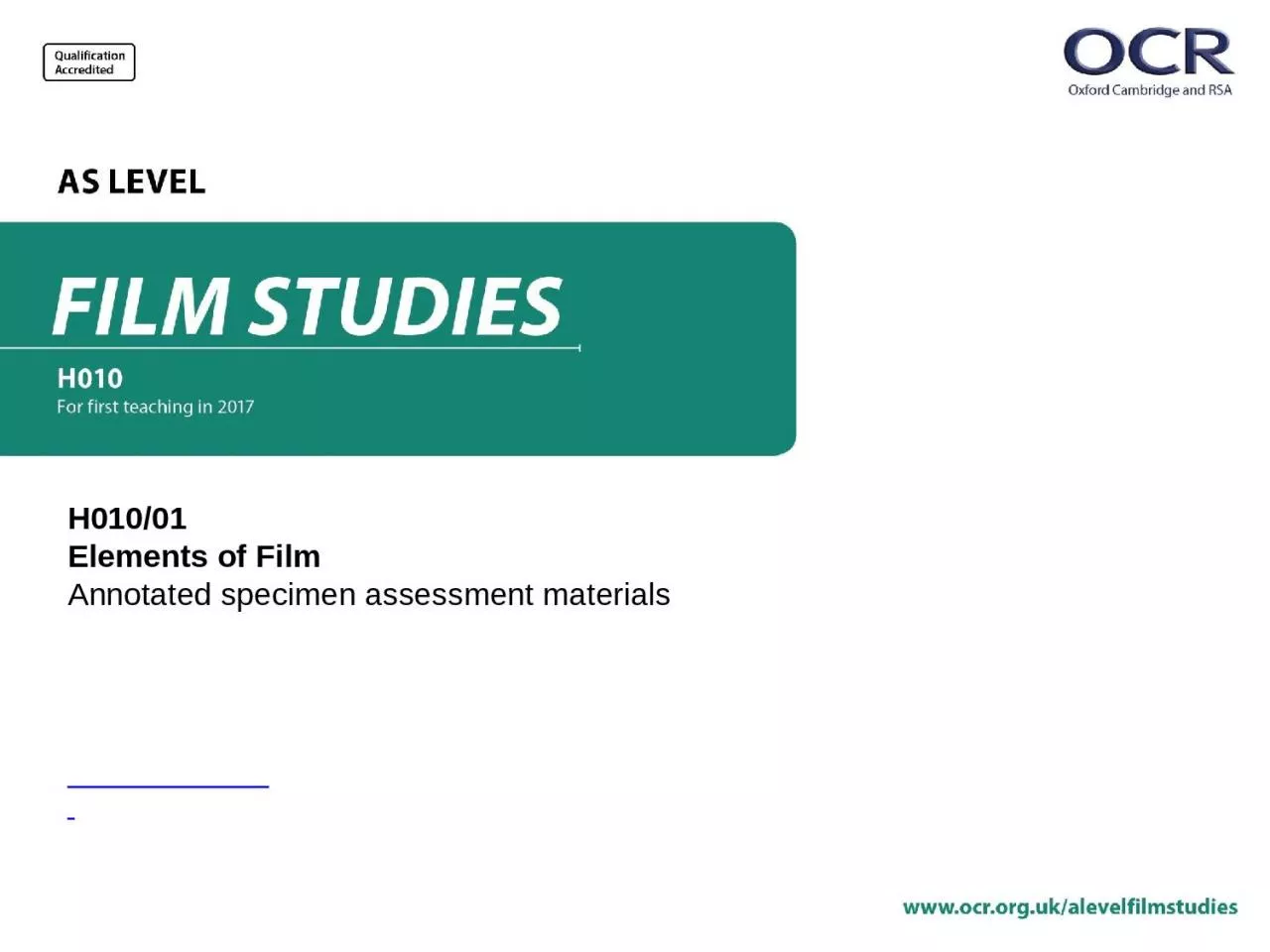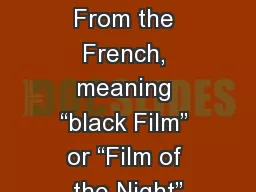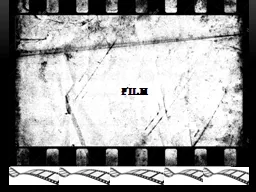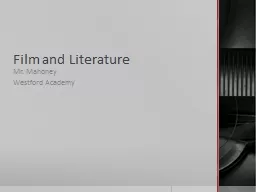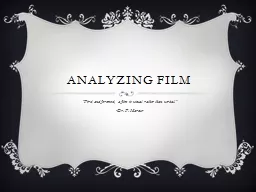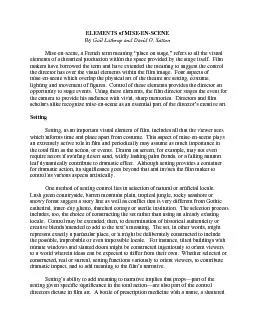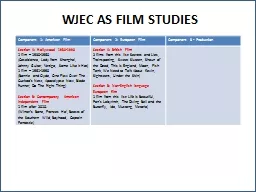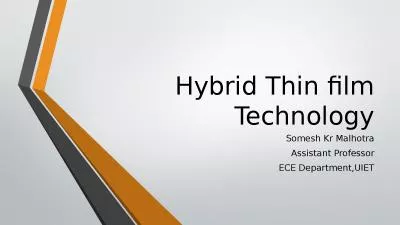PPT-H010/01 Elements of Film
Author : PlayfulPenguin | Published Date : 2022-08-02
Annotated specimen assessment materials Guidance This guide is designed to take you though the AS Level Film Studies H01001 exam paper Its aim is to explain
Presentation Embed Code
Download Presentation
Download Presentation The PPT/PDF document "H010/01 Elements of Film" is the property of its rightful owner. Permission is granted to download and print the materials on this website for personal, non-commercial use only, and to display it on your personal computer provided you do not modify the materials and that you retain all copyright notices contained in the materials. By downloading content from our website, you accept the terms of this agreement.
H010/01 Elements of Film: Transcript
Download Rules Of Document
"H010/01 Elements of Film"The content belongs to its owner. You may download and print it for personal use, without modification, and keep all copyright notices. By downloading, you agree to these terms.
Related Documents

